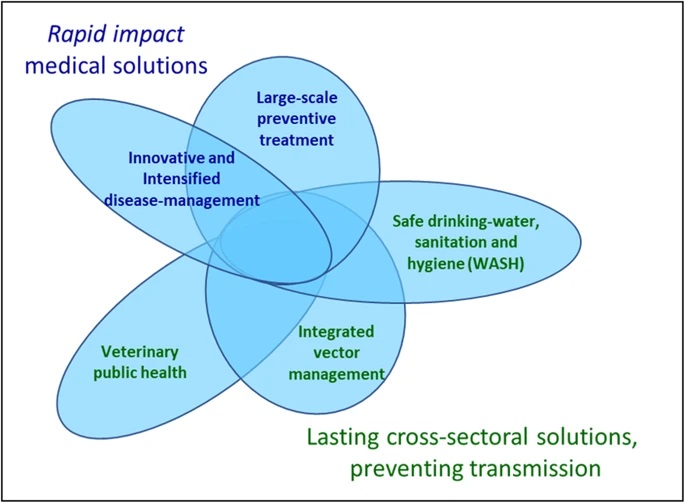Resources Lesson 4: Neglected Tropical Diseases
This part might have been included in the Communicable Diseases section, but precisely because they are often neglected, we have given them a special place in the course.
The WHO site Neglected Tropical Diseases provides a clear outline of the problem: "Neglected tropical diseases (NTDs)– a diverse group of communicable diseases that prevail in tropical and subtropical conditions in 149 countries – affect more than one billion people and cost developing economies billions of dollars every year. Populations living in poverty, without adequate sanitation and in close contact with infectious vectors and domestic animals and livestock are those worst affected."
You can explore the work of WHO in this area further at Neglected Tropical Diseases.
The page in the Centres for Disease Control and Prevention (CDC)'s Neglected Tropical Diseases (NTDs) site gives some encouraging information: 'Six of the infections caused by NTDs can be controlled or even eliminated through mass administration of safe and effective medicines (mass drug administration, MDA), or other, effective interventions. These diseases are known as targeted or "tool ready" NTDs. Along with MDA and interventions, efforts to control the vectors (e.g. mosquitoes, black flies) that transmit these diseases and to improve basic water, sanitation, and hygiene, are highly effective strategies against these NTDs.'
Another good online reference includes aspects of prevention and control: USAID's site: http://www.neglecteddiseases.
There is a particularly useful quick summary from the WHO site: Neglected tropical diseases: hidden successes, emerging opportunities
- Neglected tropical diseases affect more than 1 billion people, primarily poor populations living in tropical and subtropical climates.
- They frequently cluster geographically and overlap; individuals are often afflicted with more than one parasite or infection.
- 100% of low-income countries are affected by at least five neglected tropical diseases simultaneously.
- More than 70% of countries and territories that report the presence of neglected tropical diseases are low-income and lower middle-income economies.
- Infections are attributable to unsafe water, poor housing conditions and poor sanitation. Children are most vulnerable to infections of most neglected tropical diseases.
- Neglected tropical diseases kill, impair or permanently disable millions of people every year, often resulting in life-long physical pain, social stigmatization and abuse.
- Many can be prevented, eliminated or even eradicated with improved access to existing safe and cost-effective tools.
A global response
The paper Neglected tropical diseases: an effective global response to local poverty-related disease priorities offers an outline of the global response concludes: "The global response to neglected tropical diseases has been mounted to expressly help the poor and pull their poverty-related health problems out of neglect. Driven by novel thinking and boosted by strong public-private partnership the effort has taken proportions that are unmatched in scope today."
The paper includes the following figure: The five public health interventions recommended by WHO to overcome the impact of NTDs.

From Engels, D., Zhou, X. Neglected tropical diseases: an effective global response to local poverty-related disease priorities. Licensed under CC BY 4.0
You can see more papers describing various national interventions and success stories via Elimination of neglected tropical diseases.
